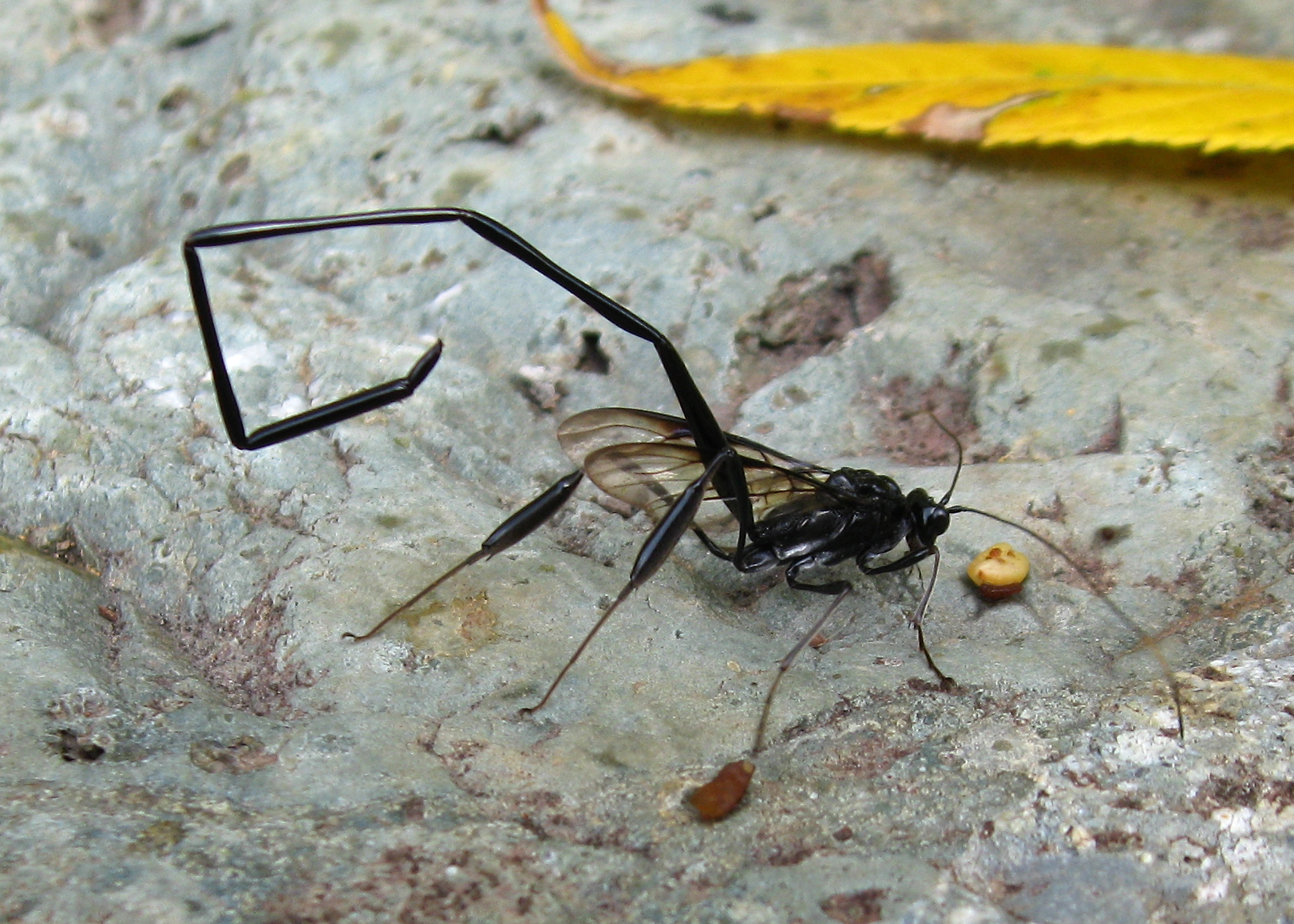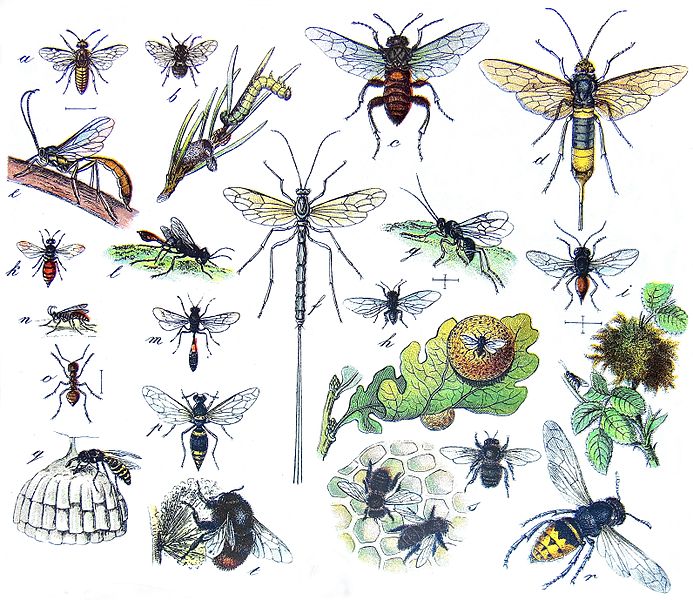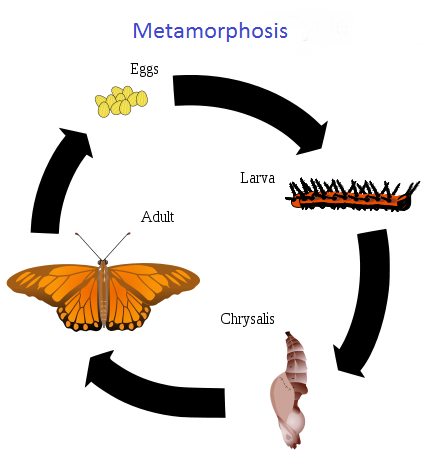Classification
Domain- Eukarya
Kingdom- Animalia
Phylum- Arthropoda
Class- Insecta
Order- Hymenoptera
Super Family- Procturapoidea
Family- Pelecinidae
Genus- Pelecinus
Species- Pelecinus polyturator
Latin name: Pelecinus polyturator
Common Names: Pelecinid Wasp, American Pelecinid
The Pelecinid wasp's classification is fairly straight forward. With the characteristics of the insects domain (Eukarya) and kingdom (Animalia) being obvious, it only pays to discuss the wasp's phylum (Arthropoda) through species (P. polyturator).
Arthropods at their most basic and obvious level have: a segmented body, paired limbs, a coelom, and an open circulatory system (University of Minnesota). P. polyturator displays all of these in force, firmly cementing the wasps place in phylum Arthropoda. Commons Arthropods include insects, as well as spiders and crustaceans (crabs, lobster, etc).

An adult female P. polyturator.
Note the profound segments that are the head, thorax
and abdomen, as well as the paired limbs, all
characteristics of an Arthropod.
Further down in the classification chain is the wasps class, Insecta, the largest and most diverse class on earth. Insects differ from other Arthropods in several big ways. Firstly, insects have 3 pairs of legs, for a total of 6 legs. Insects have compound eyes, a major evolutionary development as far as sensory organs go. Insects also undergo a complete metamorphosis, going from a larval stage to a totally different adult stage (Arnett 1985). Metamorphosis can be looked at as a method of indirect development, with the young insect hatching from an egg in larval form, molting, pupating, and turning into a totally different adult form (see diagram).
The order Hymenoptera has several distinguishing characteristics. Hymenoptera, in Latin, is roughly translated "membrane wing" (Arnett 1985). Adult Hymenoptera generally have 2 pairs of thin, membrane like wings (thus, the Latin roots), and some may have no wings (ants, for example). Hymenoptera have 2 profound antennae. Females have an ovipositor for depositing eggs (Eisman and Charney 2010). Many Hymenoptera have specialized the ovipositor to be a stinger, as is the case in many wasps and bees (Eisman and Charney 2010).

A Sampling of order Hymenoptera
The creatures super family, Procturapoidea, "is a very large, very diverse super family" (Krombein, et al 1979). Insects in this family are characterized by being parasitic. Being a parasitic insect is different than a typical parasite. Being a parasitic insect relates mainly to the insects method of reproduction. The host organism is not used for nourishment purposes, but as a support vessel for the insects larvae. When the larvae hatches, the host is typically killed and used as a first meal for the insect larvae. Parasitic insects have no interest in keeping the host alive, unlike a typical parasite (Resh and Carde 2003).
Finally, getting very specific, is the insects family, Pelecinidae. It is widely accepted that there is only one genus (Pelecinus), and 3 specific species worldwide in this family (Bug Guide 2011). Only one of these species is found in North America, which happens to be P. polyturator (Krombein, et al 1979). Family Pelecinidae is known for being parasitic wasps of ground inhabiting beetles in the family Scarabaiedae (Engel and Grimaldi 2006).
